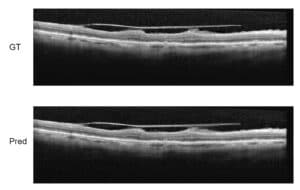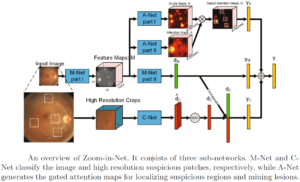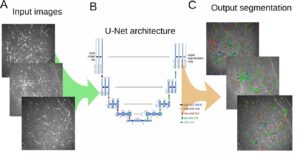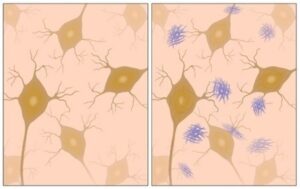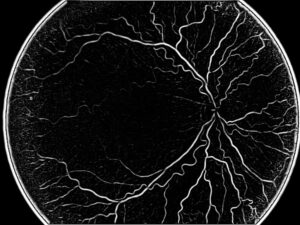Retinal thickness is a key measurement used to assess the health of the retina and whether it needs any treatment. Thickness measure of a patient’s retina should ideally fall within a range, which varies according to the region of the eye. For example, the retina is typically thinner in the center, in the foveal area.
Figures can be compared to optimal ranges or to data from the same patient over time: thinning retina can be the consequence of aging or of retinal disorders which might or might not need to be treated. In particular, the thickness, coherence and curvature of the retina layers have been shown to be related to a range of different retinopathies.
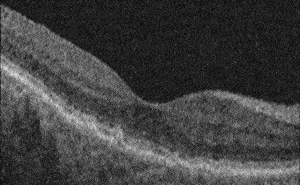
Across various definitions, retinal thickness is calculated as the distance between the edges of the retina: in this project we were asked by our client to measure the ILM to RPE total retinal thickness, where the ILM is the internal limiting membrane and the RPE is the retinal pigment epithelium.
We can measure the thickness of the retina from OCT (Optical Coherence Tomography) scans. These scans are 2D slices which need to be combined to create a 3D view which can be used by the medical professionals. Experienced ophthalmologists are able to manually identify ILM and RPE lines on OCT scans and their assessment of retinal thickness is reliable: however, doing that in a huge number of OCT slices is a very long and tedious activity, hence the need for an automatic measurement of retinal thickness in the areas of interest using computerized image processing algorithms calculating the distance of ILM to RPE.
The measurement of retinal thickness is generally performed on high-resolution OCT scans, but our client needed a more sophisticated solution able to give a correct measurement even when OCT is done with older, slower or otherwise less performing equipment, in order to allow ophthalmologists to still provide a correct diagnostics of the status of the retina. Of course, input of lower quality needs more sophisticated algorithms to compensate for missing or incomplete data in the OCT scans.
Advanced optimization methods, borrowed from graph theory – one of the active and fruitful fields in mathematics – helped us to solve the complex challenge by representing the problem as a graph and allowing to solve it over the complete slice (global optimization) through mathematical theorems, all within reasonable processing time.
The output provided by our software on lower quality devices was compared by our client with output given by better quality equipment and the results were overall equivalent, notwithstanding the challenging conditions. The software application specifically developed by RSIP Vision was found exceptionally reliable: it was therefore adopted by our client and is currently used on OCT equipment to perform automatic measurement of retinal thickness.
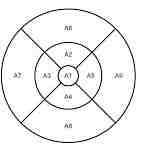

 Ophthalmology
Ophthalmology